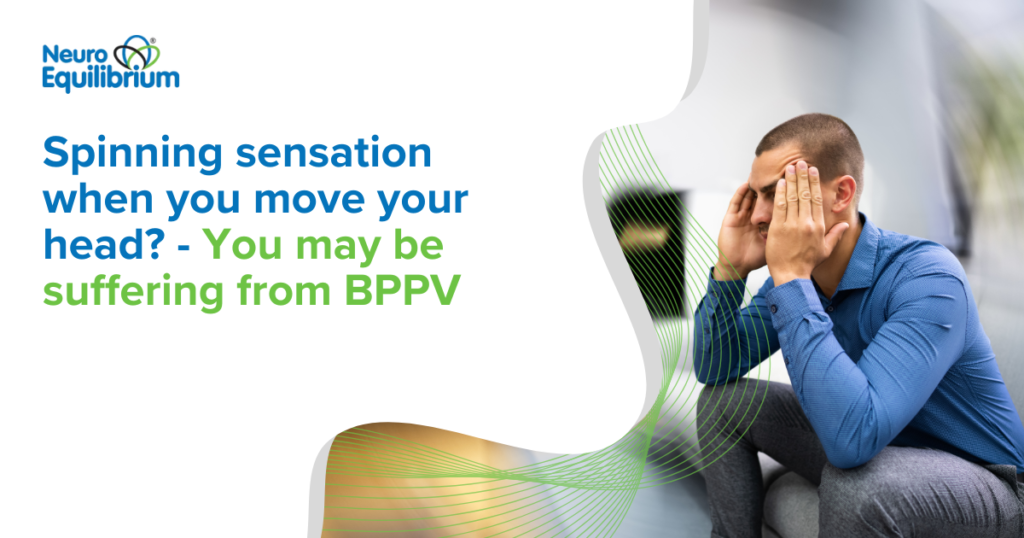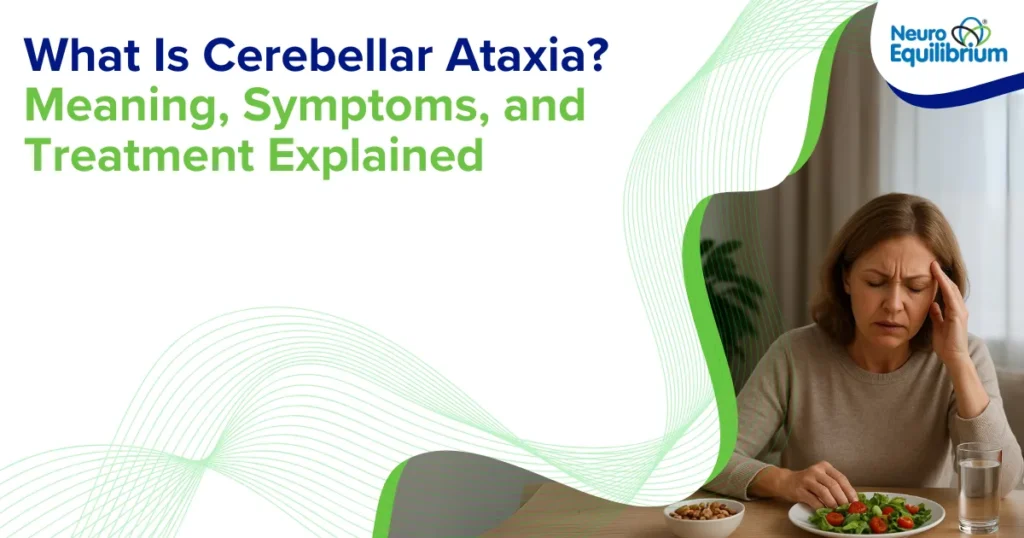Understanding Vertigo and BPPV: A Journey to Effective Treatment
Imagine waking up feeling as if you’re on a spinning merry-go-round or in the midst of an earthquake. This is how top Australian cricketer Steve Smith felt just before his second One Day International match against India. He described it as a “bad dose of vertigo.” Vertigo is a disorienting sensation that many describe as spinning, unsteadiness, or simply “chakkar.” It’s a common issue, affecting about 5% of the population, which translates to roughly 60 million Indians. For many, it can be a persistent and frightening problem.
Vertigo itself isn’t a disease but a symptom, often stemming from disorders of the inner ear or brain. One of the most common causes is BPPV (Benign Paroxysmal Positional Vertigo), which can affect people of all ages, though it’s more frequent in older adults.
Learn More About BPPV:
- BPPV Treatment: Epley Maneuver and Other Repositioning Techniques
- BPPV (Benign Paroxysmal Positional Vertigo): Causes and Symptoms
What is BPPV?
BPPV occurs when tiny calcium carbonate crystals, known as otoliths, become dislodged from their usual position in the inner ear and move into the semicircular canals. These displaced crystals disrupt the fluid movement inside the inner ear, causing sudden, brief episodes of vertigo during head movement. Although the vertigo generally subsides in less than a minute, it can be very distressing. The episodes often occur when getting up in the morning, turning in bed, or bending down.
Causes of BPPV
The dislodging of calcium carbonate particles in the inner ear can be triggered by various factors, including injuries, prolonged bedrest, surgery, or sudden head movements during exercise. BPPV is also more common in those with migraines or other ear disorders like Meniere’s disease and Vestibular Neuritis. However, in many cases, BPPV can occur spontaneously, without any clear cause. In older adults, the risk of vertigo is a serious health concern, as it increases the likelihood of falls and related injuries.
Diagnosing BPPV
Though BPPV is a frequent cause of vertigo, it often goes undiagnosed. Diagnosis requires specific positional tests that involve moving the patient’s head to stimulate the dislodged crystals. The movements can provoke jerky eye motions called nystagmus, which help the clinician pinpoint the crystal’s location and the type of BPPV. Advanced diagnostic tools, like VNG-guided testing with high-speed infrared cameras, enhance the accuracy of these tests.
Head Spinning in Brief: Quick Facts
What It Is
Head spinning describes a sudden or recurring sensation of rotation, imbalance, or instability. Unlike general dizziness, it often feels as though either you or your surroundings are moving even when you are still. This may originate from the inner ear, nervous system, or circulation-related changes.
Common Symptoms
- Feeling of spinning or tilting.
- Nausea or a queasy stomach.
- Blurred or shifting vision.
- Difficulty walking straight or maintaining balance.
Frequent Causes
- Benign paroxysmal positional vertigo (BPPV): Triggered by tiny displaced crystals in the inner ear.
- Migraines: Can create vertigo-like episodes even without a headache.
- Dehydration: Reduces blood flow to the brain and may cause dizziness.
- Cervical spondylosis: Age-related neck changes that affect posture and balance.
- Low blood pressure: Sudden drops can cause brief spinning sensations.
Treating BPPV with the Epley Maneuver
The most effective vertigo treatment for BPPV involves restoring the crystals to their correct position in the inner ear. The Epley Maneuver is one of the most widely used techniques for this purpose. It consists of a series of guided head and body movements that reposition the dislodged crystals back to their original location in the utricle. Each type of BPPV requires a specific repositioning maneuver, and the Epley Maneuver has proven highly effective for many cases.
In Steve Smith’s case, his team doctor, Leigh Golding, performed the Epley Maneuver before the match. This simple, non-invasive technique relieved Smith’s symptoms, allowing him to score a remarkable 100 runs off just 62 balls!


Technological Advancements in Vertigo Treatment
Modern medicine has made tremendous strides in diagnosing and treating BPPV. NeuroEquilibrium utilizes advanced software to create three-dimensional visual simulations of crystal movement during BPPV episodes. This technology aids clinicians in achieving precise head angulation during maneuvers like the Epley Maneuver. A visual guidance system ensures accurate repositioning, significantly improving the treatment’s effectiveness.
At Neuroequilibrium, we often receive patients who have been bedridden or in ICU. After a proper diagnosis and the correct therapeutic maneuver by our experts, many leave the clinic walking with a smile.
When to Seek Medical Help
While mild episodes of vertigo might not be concerning, it’s essential to know when to seek medical assistance. You should consult a healthcare professional if:
● You experience repeated or severe vertigo episodes.
● Vertigo is accompanied by other symptoms like double vision, difficulty speaking, or hearing loss.
● You have persistent dizziness that doesn’t improve over time.
● You notice frequent unsteadiness or difficulty walking.
● The vertigo significantly interferes with your daily activities.
Ignoring these symptoms can lead to a greater risk of falls and injuries, especially in older adults, so timely medical intervention is crucial.
Where to Seek Medical Help
For specialized diagnosis and treatment of BPPV and other causes of vertigo, you can visit NeuroEquilibrium, India’s leading chain of Vertigo and Balance clinics. With over 125 centers nationwide, NeuroEquilibrium offers state-of-the-art diagnostics and effective, non-invasive vertigo treatments.
How Causes Lead to Head Spinning
To see the chain of cause-effect-care, it is easier to picture it:
- BPPV → Detached inner ear crystals → Send misleading signals to the brain → Spinning suddenly backward and forward in an unstable way, but can usually be remedied by repositioning (such as the Epley maneuver).
- Dehydration decreased blood supply to the brain, decreased lightheadedness and faintness relieved by sufficient intake of fluid and electrolytes.
- Spinal changes in the neck region – altered neck proprioception (the awareness of the body position) – Instability and imbalance – Ameliorates with posture therapy and physiotherapy.
- Migraine activity – Temporary interference of the sensory message – Vertigo accompanied by nausea or light/sound sensitivity- Managed by lifestyle modification as well as prescribed medication.
First-Line Management
- Hydration: Ensures proper circulation and brain function.
- Balance therapy: Gentle exercises to train stability and reduce vertigo triggers.
- Posture correction: Helpful in cervical-related dizziness.
- Medical evaluation: Recommended when symptoms are recurrent, unexplained, or worsen over time.
When to Seek Medical Help
Immediate medical care is advised if head spinning occurs with:
- Sudden hearing loss or ringing in one or both ears.
- Neurological warning signs: Double vision, weakness, slurred speech, or facial droop.
- A severe new headache, especially if unlike previous headaches.
- Loss of coordination, repeated falls, or inability to walk safely.
These signs may indicate a more serious condition beyond routine vertigo.
Head Spinning vs. Other Conditions
- Dizziness: loose expression used to refer to feeling light-headed, faint, or unsteady.
- Vertigo: This is a specific spinning sensation that is normally related to the inner ear problems.
- Head Spinning: This is also a patient friendly challenge and is similar to vertigo, except that there are other factors like low blood pressure and even migraine that can cause this.
This distinction can help patients and carers to exchange symptoms more efficiently and understand possible causes.
Conclusion
BPPV (Benign Paroxysmal Positional Vertigo) is one of the most treatable causes of vertigo. With accurate diagnosis and appropriate vertigo treatment using various manaevers , patients can experience immediate relief. Advanced diagnostic and treatment technologies have revolutionized care for vertigo sufferers, turning a once debilitating condition into a success story of modern medicine.
1. What is the most common cause of vertigo?
One of the most common causes of vertigo is Benign ferocious Positional Vertigo( BPPV). BPPV occurs when bitsy calcium carbonate chargers( otoliths) in the inner observance come dislodged and move into the semicircular conduits. This causes a sensation of spinning or dizziness, especially when changing head positions. BPPV is particularly common among older adults but can affect people of all ages. It can be triggered by sudden head movements, injuries, or prolonged bed rest, and sometimes occurs without a clear cause. Proper diagnosis and treatment can effectively manage the condition.
Book a consultation at your nearest NeuroEquilibrium Clinic today.
2. How can I tell if I have BPPV?
You might have BPPV if you experience sudden and brief episodes of dizziness, particularly when moving your head, such as getting up from bed, turning over, or bending down. These episodes typically last less than a minute and are triggered by specific head movements. Other symptoms may include nausea, unsteadiness, or a feeling of being off-balance. BPPV is diagnosed through positional tests that provoke nystagmus (involuntary eye movements), helping to pinpoint the affected area in the inner ear. If you notice such symptoms, it’s advisable to seek medical evaluation for accurate diagnosis.
Book a consultation at your nearest NeuroEquilibrium Clinic today.
3. What treatments are available for BPPV?
BPPV treatment primarily involves repositioning maneuvers to move the dislodged crystals back to their original position in the inner ear. The Epley Maneuver is a widely used technique, consisting of a series of guided head and body movements. Other maneuvers like Semont’s or the Barbecue Roll are used for specific BPPV variants. These treatments are typically non-invasive, and when performed correctly, they provide rapid relief from symptoms. Advanced technologies, such as VNG-guided diagnostics, can help enhance accuracy during treatment. Specialized clinics like NeuroEquilibrium are equipped to handle complex cases.
Book a consultation at your nearest NeuroEquilibrium Clinic today.
4. When should I see a doctor for vertigo?
Consult a doctor if you experience recurrent or severe vertigo episodes, particularly if they are accompanied by additional symptoms like double vision, hearing loss, trouble speaking, or difficulty walking. Persistent dizziness that doesn’t improve, even after rest, or sudden dizziness after a head injury also warrants medical evaluation. In older adults, untreated vertigo can lead to falls and injuries, so early diagnosis is essential. Visiting a specialist, like those at NeuroEquilibrium, ensures a thorough assessment, accurate diagnosis, and effective treatment plan tailored to your specific condition.
Book a consultation at your nearest NeuroEquilibrium Clinic today.
5. Can BPPV recur after treatment?
Yes, BPPV can recur even after successful treatment. Although repositioning maneuvers like the Epley Maneuver often provide immediate relief, BPPV can return weeks, months, or even years later. Recurrences are common, especially in individuals with underlying conditions like migraines or inner ear disorders. However, knowing the specific maneuvers can help patients manage future episodes. For recurrent cases, clinics like NeuroEquilibrium offer ongoing support, monitoring, and advanced diagnostic tools to manage and minimize future episodes. Regular follow-ups and adherence to recommended exercises can also reduce the likelihood of recurrence.
Book a consultation at your nearest NeuroEquilibrium Clinic today.
















